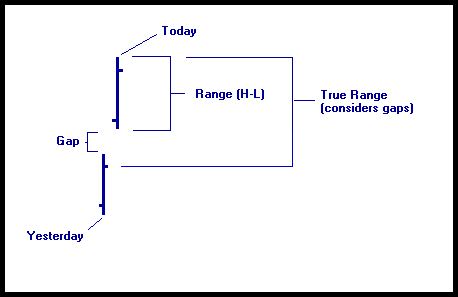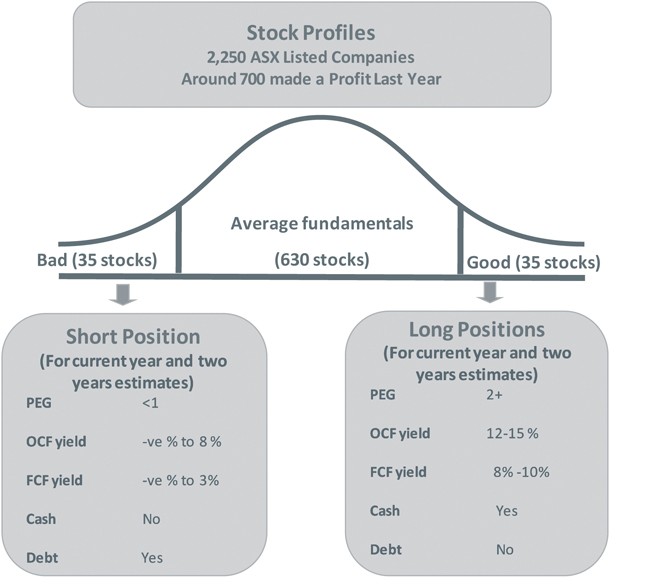Understanding Volatility Measurements
Post on: 4 Апрель, 2015 No Comment

When considering a fund’s volatility, an investor may find it difficult to decide which fund will provide the optimal risk-reward combination. Many websites provide various volatility measures for mutual funds free of charge; however, it can be hard to know not only what the figures mean but also how to analyze them. Furthermore, the relationship between these figures is not always obvious. Read on to learn about the four most common volatility measures and how they’re applied in the type of risk analysis that is based on modern portfolio theory. (Learn more about modern portfolio theory in Modern Portfolio Theory: Why It’s Still Hip .)
Optimal Portfolio Theory and Mutual Funds
One examination of the relationship between portfolio returns and risk is the efficient frontier. a curve that is a part of the modern portfolio theory. The curve forms from a graph plotting return and risk indicated by volatility, which is represented by standard deviation. According to the modern portfolio theory, funds lying on the curve are yielding the maximum return possible given the amount of volatility.
Notice that as standard deviation increases, so does the return. In the above chart, once expected returns of a portfolio reach a certain level, an investor must take on a large amount of volatility for a small increase in return. Obviously portfolios that have a risk/return relationship plotted far below the curve are not optimal as the investor is taking on a large amount of instability for a small return. To determine if the proposed fund has an optimal return for the amount of volatility acquired, an investor needs to do an analysis of the fund’s standard deviation.
Note that the modern portfolio theory and volatility are not the only means investors use to determine and analyze risk, which may be caused by many different factors in the market. Not all investors therefore evaluate the chance of losses the same way — things like risk tolerance and investment strategy will affect how an investor views his or her exposure to risk. (See the tutorial Risk and Diversification for more on these different sources of risk.)
1. Standard Deviation
As with many statistical measures, the calculation for standard deviation can be intimidating, but, as the number is extremely useful for those who know how to use it, there are many free mutual fund screening services that provide the standard deviations of funds.
The standard deviation essentially reports a fund’s volatility. which indicates the tendency of the returns to rise or fall drastically in a short period of time. A security that is volatile is also considered higher risk because its performance may change quickly in either direction at any moment. The standard deviation of a fund measures this risk by measuring the degree to which the fund fluctuates in relation to its mean return, the average return of a fund over a period of time.
A fund that has a consistent four-year return of 3%, for example, would have a mean, or average, of 3%. The standard deviation for this fund would then be zero because the fund’s return in any given year does not differ from its four-year mean of 3%. On the other hand, a fund that in each of the last four years returned -5%, 17%, 2% and 30% will have a mean return of 11%. The fund will also exhibit a high standard deviation because each year the return of the fund differs from the mean return. This fund is therefore more risky because it fluctuates widely between negative and positive returns within a short period.
A note to remember is that, because volatility is only one indicator of the risk affecting a security, a stable past performance of a fund is not necessarily a guarantee of future stability. Since unforeseen market factors can influence volatility, a fund that this year has a standard deviation close or equal to zero may behave differently in the following year.
To determine how well a fund is maximizing the return received for its volatility, you can compare the fund to another with a similar investment strategy and similar returns. The fund with the lower standard deviation would be more optimal because it is maximizing the return received for the amount of risk acquired. Consider the following graph:
With the S&P 500 Fund B, the investor would be acquiring a larger amount of volatility risk than necessary to achieve the same returns as Fund A. Fund A would provide the investor with the optimal risk/return relationship. (For more on volatility, read The Uses And Limits Of Volatility .)
While standard deviation determines the volatility of a fund according to the disparity of its returns over a period of time, beta. another useful statistical measure, determines the volatility (or risk) of a fund in comparison to that of its index or benchmark. A fund with a beta very close to 1 means the fund’s performance closely matches the index or benchmark. A beta greater than 1 indicates greater volatility than the overall market, and a beta less than 1 indicates less volatility than the benchmark.
If, for example, a fund has a beta of 1.05 in relation to the S&P 500. the fund has been moving 5% more than the index. Therefore, if the S&P 500 increased 15%, the fund would be expected to increase 15.75%. On the other hand, a fund with a beta of 2.4 would be expected to move 2.4 times more than its corresponding index. So if the S&P 500 moved 10%, the fund would be expected to rise 24%, and, if the S&P 500 declined 10%, the fund would be expected to lose 24%.
Investors expecting the market to be bullish may choose funds exhibiting high betas, which increase investors’ chances of beating the market. If an investor expects the market to be bearish in the near future, the funds that have betas less than one are a good choice because they would be expected to decline less in value than the index. For example, if a fund had a beta of 0.5 and the S&P 500 declined 6%, the fund would be expected to decline only 3%.
Be aware of the fact that beta by itself is limited and can be skewed due to factors other than the market risk affecting the fund’s volatility. (Learn more about beta in Build Diversity Through Beta .)
3. R-Squared

The R-squared of a fund advises investors if the beta of a mutual fund is measured against an appropriate benchmark. Measuring the correlation of a fund’s movements to that of an index, R-squared describes the level of association between the fund’s volatility and market risk, or more specifically, the degree to which a fund’s volatility is a result of the day-to-day fluctuations experienced by the overall market.
R-squared values range between 0 and 100, where 0 represents the least correlation and 100 represents full correlation. If a fund’s beta has an R-squared value that is close to 100, the beta of the fund should be trusted. On the other hand, an R-squared value that is close to 0 indicates that the beta is not particularly useful because the fund is being compared against an inappropriate benchmark.
If, for example, a bond fund was judged against the S&P 500, the R-squared value would be very low. A bond index such as the Lehman Brothers Aggregate Bond Index would be a much more appropriate benchmark for a bond fund, so the resulting R-squared value would be higher. Obviously the risks apparent in the stock market are different than the risks associated with the bond market. Therefore, if the beta for a bond were calculated using a stock index, the beta would not be trustworthy.
An inappropriate benchmark will skew more than just beta. Alpha is calculated using beta, so if the R-squared value of a fund is low, it is also wise not to trust the figure given for alpha. We’ll go through an example in the next section.
Up to this point, we have learned how to examine figures that measure risk posed by volatility, but how do we measure the extra return rewarded to you for taking on risk posed by factors other than market volatility? Enter alpha, which measures how much if any of this extra risk helped the fund outperform its corresponding benchmark. Using beta, alpha’s computation compares the fund’s performance to that of the benchmark’s risk-adjusted returns and establishes if the fund’s returns outperformed the market’s, given the same amount of risk.
For example, if a fund has an alpha of one, it means that the fund outperformed the benchmark by 1%. Negative alphas are bad in that they indicate that the fund underperformed for the amount of extra, fund-specific risk that the fund’s investors undertook.
Using All Four Indicators
Consider the Franklin Small Cap Value C fund, for which Morningstar.com provides both the standard index for equity funds, and the best fit index. As of Jun 30, 2003, when compared to the S&P 500 fund, the Franklin fund had an alpha of 20.82, while it had an alpha of 1.35 when compared to the Russell Midcap Value index. Which alpha is more accurate? Because the alpha’s accuracy depends on beta’s accuracy, the higher the R-squared, the better. The R-squared for the comparison to S&P 500 index is 56, and, for the comparison to the Russell index, the R-squared is 84. The alpha of 1.35, therefore, is the most accurate, and it indicates that the extra risk taken on by the Franklin fund helped it, on average, outperform other funds in its category by 1.35%.
The Bottom Line
This explanation of these four statistical measures provides you with the basic knowledge on using them to apply the premise of the optimal portfolio theory, which uses volatility to establish risk and states a guideline for determining how much of a fund’s volatility carries a higher potential for return. As you may have noticed, these figures may be difficult and complicated to understand, but if you do use them, it is important you know what they mean. Do keep in mind that these calculations only work within one type of risk analysis. When you are deciding on buying mutual funds it is important that you be aware of factors other than volatility that affect and indicate the risk posed by mutual funds. (Learn more about risk and volatility in 5 Ways To Measure Mutual Fund Risk .)














